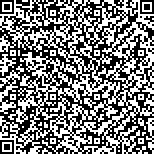叶冬梅,陈琛,沈梅,刘虹伟,王亮,张素蕊,张红,李静亚,于雯霏,王威.口咽肌训练治疗卒中并发中度梗阻性呼吸睡眠暂停低通气综合征的疗效观察[J].中华物理医学与康复杂志,2018,40(8):583-587
扫码阅读全文

|
| 口咽肌训练治疗卒中并发中度梗阻性呼吸睡眠暂停低通气综合征的疗效观察 |
|
| |
| DOI: |
| 中文关键词: 梗阻性呼吸睡眠暂停低通气综合征 脑卒中 口咽肌训练 多导睡眠图 |
| 英文关键词: Apnea Stroke Oropharyngeal muscles Polysomnography |
| 基金项目: |
|
| 摘要点击次数: 6408 |
| 全文下载次数: 7312 |
| 中文摘要: |
| 目的 观察口咽肌训练治疗卒中后中度梗阻性呼吸睡眠暂停低通气综合征(OSAS)的疗效。 方法 采用随机数法将50例卒中后并发OSAS患者分为观察组及对照组。2组患者均给予对症处理及常规康复训练,观察组在此基础上辅以口咽肌训练,每天治疗2次,每次治疗20 min,对照组则辅以同疗程深呼吸训练。于治疗前、治疗6周后进行疗效评定,包括采用多导睡眠监测(PSG)患者睡眠时呼吸及血氧饱和度,采用匹兹堡睡眠治疗量指数(PSQI)评价患者睡眠习惯及睡眠质量,采用斯坦福嗜睡自评量表(SSS)评价患者嗜睡情况;采用Fugl-Meyer运动功能量表评价患者运动能力,采用Barthel指数评价患者日常生活活动能力,采用简易精神状态量表(MMSE)评价患者认知能力;采用咽部核磁共振测量患者咽部形态学改变,并将咽部形态学测量结果与训练时长进行相关性分析。 结果 口咽肌训练可显著改善卒中后伴OSAS患者呼吸紊乱指数、最低血氧饱和度及鼾声指数,提高患者睡眠质量及缓解日间嗜睡情况;同时还能提高患者肢体运动功能及日常生活活动能力,但对患者认知功能无明显改善作用(P>0.05);MRI测量数据显示,口咽肌训练可明显增加患者软腭后距离,缩短软腭长度(均P<0.05),并且软腭后距离与训练时长呈正相关,软腭长度与训练时长呈负相关。 结论 口咽肌训练可能通过改善脑卒中并发OSAS患者口咽部形态减轻睡眠呼吸梗阻,从而改善睡眠质量,提高运动功能及日常生活活动能力,有望为此类患者康复干预提供一种无创性治疗手段。 |
| 英文摘要: |
| Objective To observe the efficacy of oropharyngeal muscle exercise for relieving obstructive sleep apnea (OSAS) among stroke survivors. Methods Fifty stroke survivors with moderate OSAS were randomly divided into an observation group and a control group, each of 25. Both groups were given routine drugs and rehabilitation, while the observation group was additionally provided with oropharyngeal muscle exercises during the daytime for 20 minutes twice a day for 6 weeks. The control group received deep breathing therapy. Before and after the 6 weeks of treatment, both groups were evaluated using polysomnography. Their sleep quality and daytime sleepiness were measured using the Pittsburgh sleep quality index and the Stanford sleepiness scale. Any changes in the patients′ pharyngeal morphology after exercise were evaluated using MRI. Results After the oropharyngeal muscle exercises, the apnea hypoventilation index and minimum SaO2%, the snore index and sleep quality improved significantly. Daytime sleepiness was significantly relieved. Some structural remodeling of the pharyngeal airway was observed by MRI, including significantly larger retropalatal distance and shorter length of the soft palate. The retropalatal distance was positively and correlated with the duration of exercise while the length of soft palate correlated negatively. Conclusion Exercising the oropharyngeal muscles is a promising alternative treatment for stroke survivors with moderate OSAS. It improves the morphology of the oropharynx to relieve obstruction during sleeping. |
|
查看全文
查看/发表评论 下载PDF阅读器 |
| 关闭 |